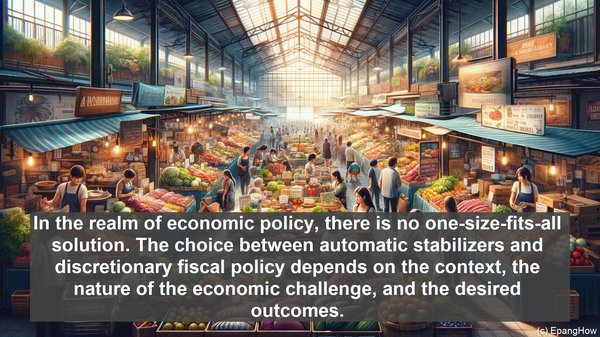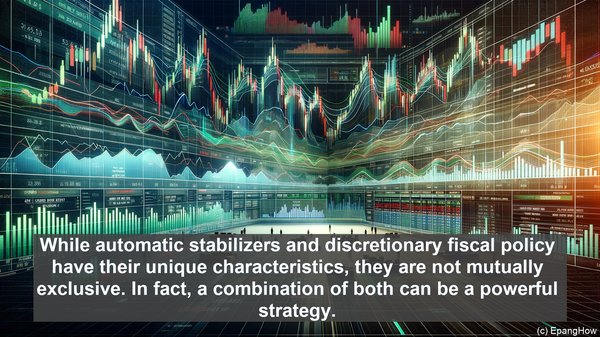Introduction: The Quest for Economic Stability
Hello everyone! In the ever-changing world of economics, stability is a prized goal. Governments and policymakers employ various strategies to achieve this, with automatic stabilizers and discretionary fiscal policy being two prominent approaches. Today, we’ll explore how these tools differ and the implications of their usage.

Automatic Stabilizers: The Built-in Safety Nets
Automatic stabilizers are mechanisms that kick into action automatically during economic fluctuations. They are inherent features of the economic system, requiring no explicit intervention. Examples of automatic stabilizers include progressive income taxes, unemployment benefits, and welfare programs. During a downturn, these stabilizers provide a cushion, boosting aggregate demand and softening the blow. Similarly, during an upswing, they act as a check, curbing excessive growth and inflationary pressures.
Discretionary Fiscal Policy: The Hands-on Approach
In contrast, discretionary fiscal policy involves deliberate actions taken by policymakers in response to economic conditions. It is a more active and targeted strategy. When faced with a recession, for instance, the government might implement expansionary measures like tax cuts or increased public spending to stimulate demand. Conversely, during a period of high inflation, contractionary measures such as reduced government expenditure might be employed. Unlike automatic stabilizers, discretionary policies require timely decision-making and legislative approval.
Timing and Flexibility: A Key Distinction
One of the fundamental differences between these tools lies in their timing and flexibility. Automatic stabilizers, as the name suggests, operate automatically, without the need for explicit action. This inherent nature allows for a swift response to economic changes, ensuring a relatively quick impact. Discretionary fiscal policy, on the other hand, involves a more deliberative process. Decisions need to be made, policies formulated, and implementation planned, which can take time. While this approach allows for a more tailored response, it may not be as immediate as the automatic stabilizers.

Predictability vs. Precision: Balancing Act
Another aspect to consider is the predictability and precision of the tools. Automatic stabilizers, being built-in features, are relatively predictable. Their impact can be estimated based on existing economic conditions and the design of the stabilizer. Discretionary fiscal policy, however, can be more uncertain. It relies on accurate economic forecasts and the effectiveness of the chosen measures. Additionally, the success of discretionary policies often hinges on their implementation, which can be challenging, given the complex nature of the economy.
The Combined Approach: A Synergistic Solution
While automatic stabilizers and discretionary fiscal policy have their unique characteristics, they are not mutually exclusive. In fact, a combination of both can be a powerful strategy. Automatic stabilizers provide a baseline level of stability, ensuring some degree of economic equilibrium. Discretionary policies, on the other hand, offer the flexibility to address specific challenges and fine-tune the economy. By judiciously using both tools, policymakers can create a comprehensive framework for economic stability.
